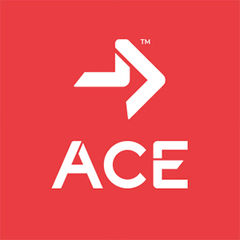When working with kids to improve their strength, a coach, fitness professional or instructor must consider the youth’s fitness level, size and training experience before writing or recommending a strength-training program. Understanding the needs of the child will help them get started at the appropriate level. Starting them off with simple movements and progressing to more advanced movements as their skills and confidence improve, will build their confidence and help prevent injury. There is nothing more dangerous than to load a child with heavy weight-bearing exercises when they are inexperienced and unfit. Be sure to observe and assess each youth in your program before recommending any strength-training programs.
The use of weight machines, free weights, medicine balls, resistance bands and body-weight exercises are all appropriate for children and adolescents to use for strength-training purposes. However, each mode of exercise has its advantages and disadvantages, and must be used appropriately.
When considering the fitness level, size and experience of the youth in training, there are three important rules to follow when picking the choice and order of the exercises for strength training:
1. Consider using weight machines, resistance bands and free weights before body-weight exercises for overweight youth. Overweight youth or kids who have not developed muscular strength most likely cannot lift their own body weight and may not yet be able to perform exercises like push-ups and pull-ups. Therefore, it would be best to begin using weight machines, resistance bands or free weights to perform simple exercise to strengthen the muscles necessary to perform these exercises before recommending body-weight push-ups or pull-ups.
Example: 1. Use a resistance band to perform a standing chest fly exercise (3 sets of 10-15 repetitions). 2. Use free weights to perform a bench chest press (3 sets of 10-15 reps). Use a chest press machine to perform a chest press (3 sets of 10-15 reps). All of these exercises strengthen the shoulders and chest muscles necessary to assist the youth in performing a full-body push-up.
2. Modify body-weight exercises: Modifying body-weight exercises to decrease the body weight resistance will improve strength and practice the necessary movement patterns to lift and lower the body.
Example: 1. Modify the push-up by planking from the knees instead of the toes. This decreases the amount of weight lifted. 2. Perform an incline push-up from a bench or table. This decreases the force of gravity on the body and will make the push-up feel easier.
3. Strengthen the core and posterior chain as the foundation of the program. It is critical to develop a strong and stable trunk before advancing youth to more complicated movement patterns and heavier lifting exercises. These core exercises give youth control of their posture and must be practiced early on in the resistance-training program to prevent injury.
Example: Perform a bird dog exercise to begin with simple core stabilization. Advance this exercise to a plank and then further to a plank-and-reach.
Consider this case study: John has poor posture and cannot do a full-body push-up. What is the choice and order of exercises we would give to John so he can progress to doing a full-body push-up?
Choice and order: 1. Practice core-strengthening exercises to build a stronger foundation of strength and help improve his posture. Begin with simple core exercises like the bird dog and progress to a plank-and-reach. 2. Use light free weights or a chest press machine to build strength in the chest and shoulders. 3. Implement modified push-ups to his program to help him understand the movement pattern and gain more strength toward a full-body push-up. 4. Once he can do several body-weight push-ups in a row, make the push-up harder by elevating the feet above the hands so that the youth is in a decline position (decline push-up).
Exercise Descriptions
Bird dogs: Begin on all fours, hands and knees. Simultaneously reach the right arm straight out in front of the body and the left leg long behind the body. Pause two to three seconds and then bring them both back to neutral. Switch sides and reach the left arm and right leg simultaneously.
Plank: Hold the body above the ground on the forearms and toes. Keep the body completely straight and tighten the muscles of the torso to work the back and abdominals.
Plank-and-reach: Begin in plank position. Slowly extend the right arm out straight while keeping the body in place without rotating. Hold for two to three seconds and alternate from the right to the left arm.
Chest fly (with resistance band): Stand with the feet staggered, facing away from the resistance band and holding onto the handles, palms facing in. Slightly bend the elbows and bring the palms together. Slowly extend the arms until you feel a stretch in the chest; repeat.
Chest press (with free weights): Lie on the back and lift the arms straight in the air at should level. Slowly lower the elbows to the floor while keeping the elbows at 90 degrees. Press the weights up toward the sky and straighten the arms and repeat.




 by
by 


